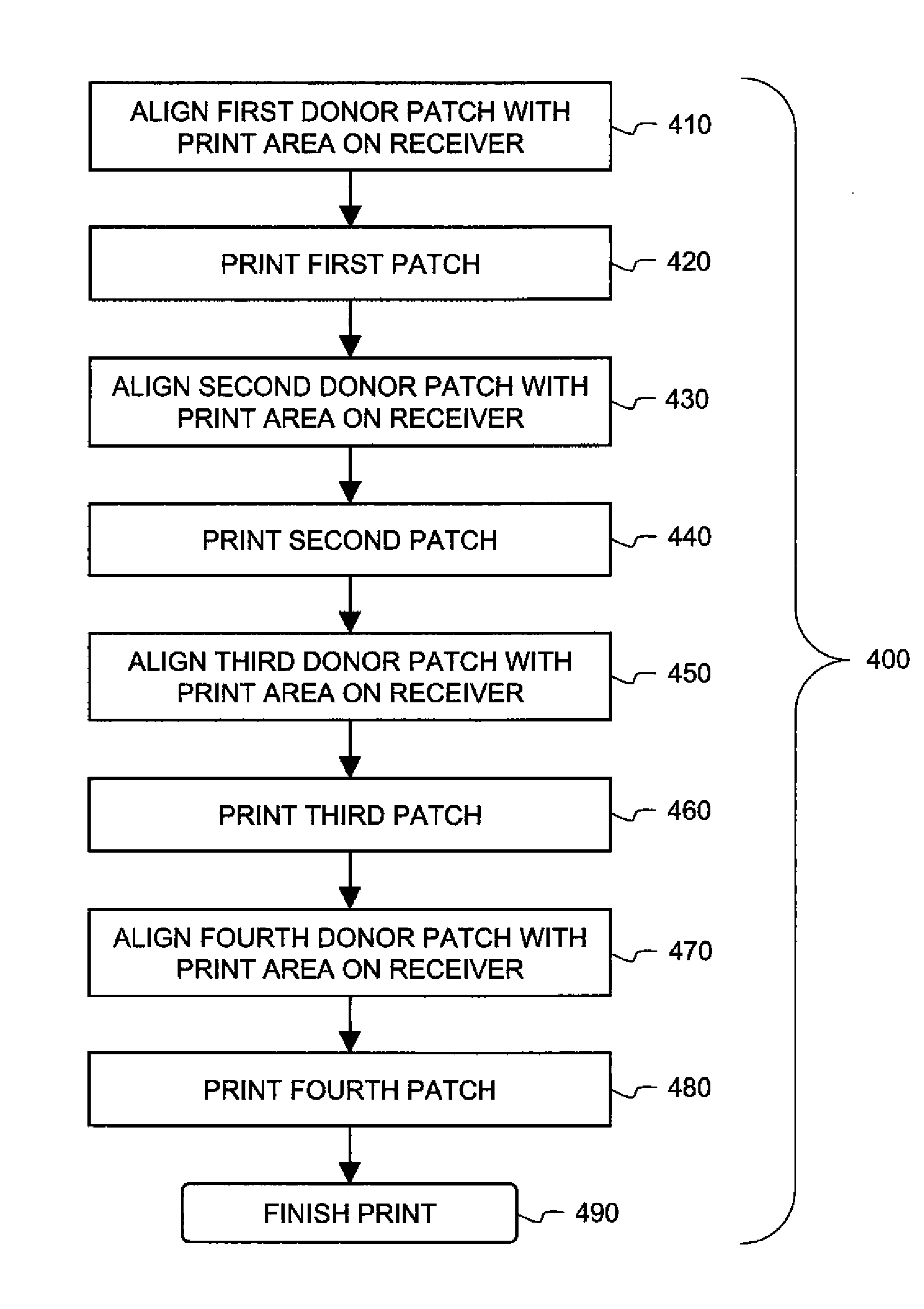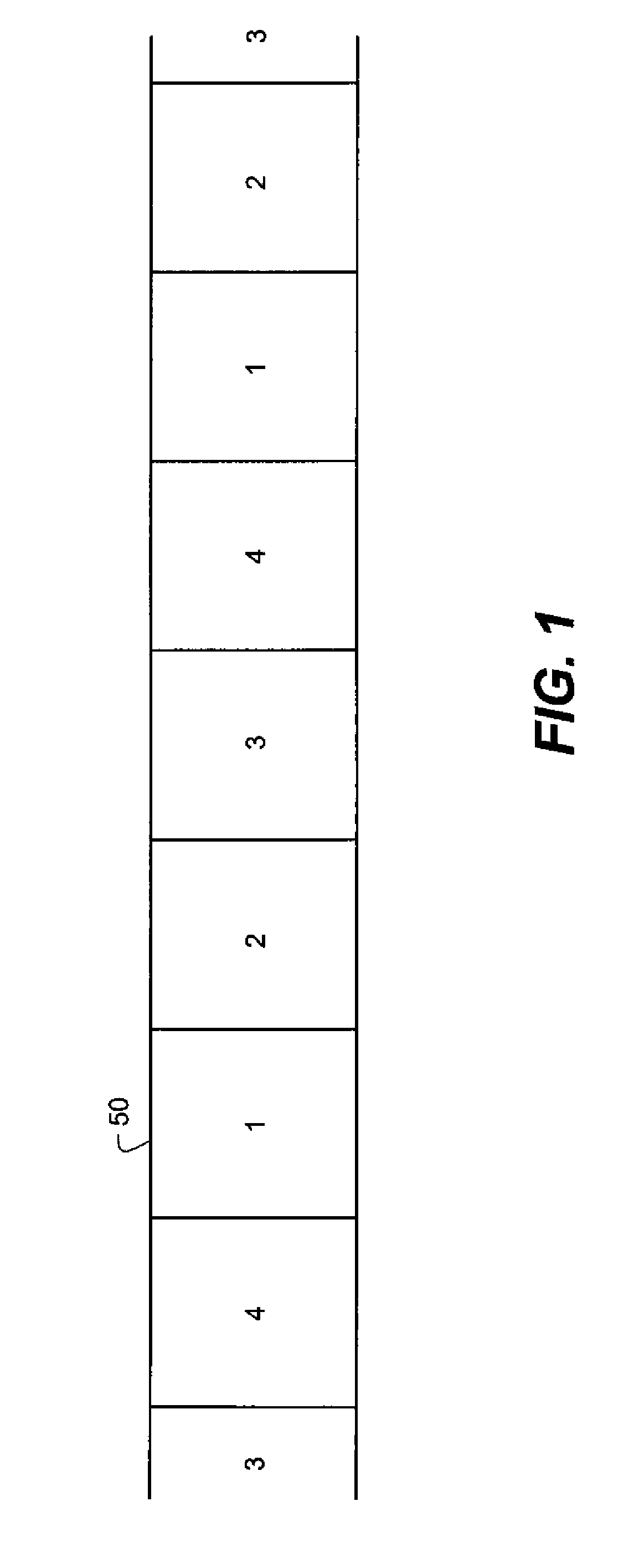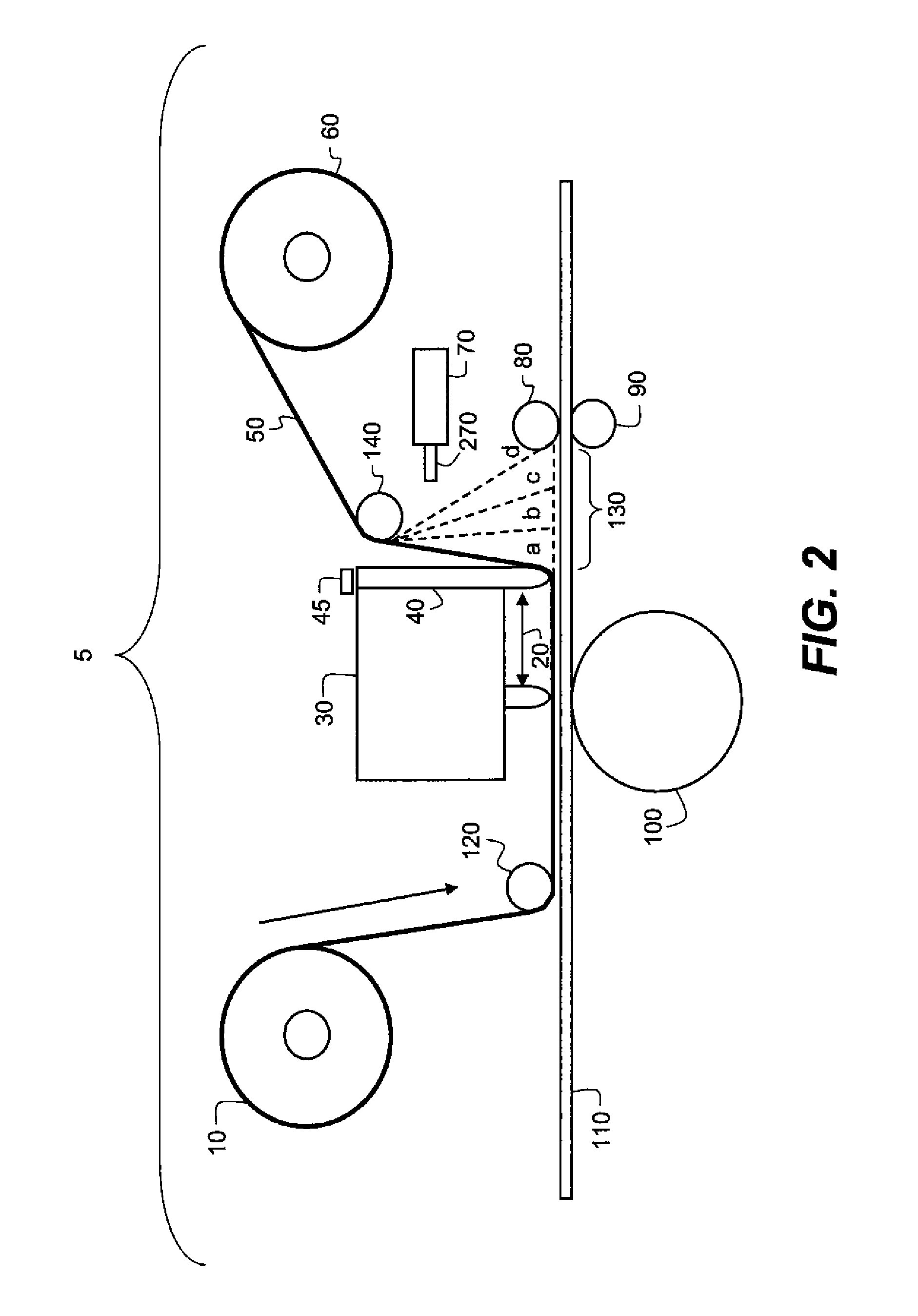Apparatus for controlling peel position in a printer
a technology of peeling position and printer, which is applied in the direction of measuring devices, printing, instruments, etc., can solve the problems of creases or wrinkles in the dye transfer area, unused dye transfer area creases or wrinkles, web vulnerable to longitudinal stretching, etc., to reduce the incidence of machine jams, improve performance, and reduce the effect of printer defects
- Summary
- Abstract
- Description
- Claims
- Application Information
AI Technical Summary
Benefits of technology
Problems solved by technology
Method used
Image
Examples
Embodiment Construction
[0033]The present description will be directed in particular to methods and / or elements forming part of, or cooperating more directly with, apparatus in accordance with the present invention. It is to be understood that elements not specifically shown or described may take various forms well known to those skilled in the art.
[0034]FIG. 1 depicts a typical multi-color dye donor web or ink ribbon 50 that is used in a dye transfer or thermal printer apparatus and method. The dye donor web 50 has a repeating series (only one completely shown) of three different rectangular-shaped color sections or patches such as a first color section 1 (usually yellow), a second color section 2 (usually magenta) and a third color section 3 (usually cyan). In addition, there is usually a transparent overcoat section or patch 4 (laminate) immediately after the third color section 3. The repeating series of dye donor web sections is applied to the same area of a second web or receiver sheet 110 shown in F...
PUM
 Login to View More
Login to View More Abstract
Description
Claims
Application Information
 Login to View More
Login to View More - R&D
- Intellectual Property
- Life Sciences
- Materials
- Tech Scout
- Unparalleled Data Quality
- Higher Quality Content
- 60% Fewer Hallucinations
Browse by: Latest US Patents, China's latest patents, Technical Efficacy Thesaurus, Application Domain, Technology Topic, Popular Technical Reports.
© 2025 PatSnap. All rights reserved.Legal|Privacy policy|Modern Slavery Act Transparency Statement|Sitemap|About US| Contact US: help@patsnap.com



